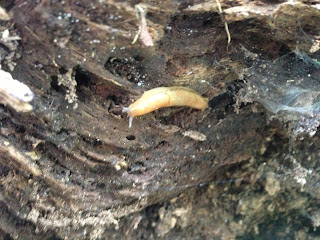Mostly Clear with Clouds and Sunshine!
We had a long drive ahead of us to the east slope of the cascades/ Ellensburg, but as we started to drive out of the Puget Sound Region, you could tell the changes in trees and topography and weather! When we arrived to the Untamun trail with nice beaming rays of sunshine and excited to see what was in store for us. As I crossed my not-so favorite bridge I began to hear a ton of bird songs and calls. We walked under railroad tracks and passed a creek and even before entering the trail, we were able to Identify a Lazuli Bunting. He was gorgeous and full of color! His head and parts of his back side was a light blue in color. He had a light orange on the upper part of his breast out lining down around his wings and a white belly. He flew away and came back up to the same tree perched. Not to far near the top of another tree Tim and Ross pointed out a GrossBeak. The GrossBeak was also much of color, it looks similar to a robin but the orange and black were very much more vibrant. He had a black head and what looks to be like an orange ring around his neck down to his belly, black feathers, and a little white specs? on his wings. As we entered the trail I heard chickadees, but they had a slightly different call than our chickadees in the west of the cascades. They seemed to be one note short of the territorial song. There were also a lot of cowbirds around. We began to look around for plants! There was a lot of Sagebrush everywhere! It had a very strong smell of a minty lavender, the leaves had a felty- smooth feel to the touch and where green-gray in color. There was also Rabitbrush , which was quite similar to the sagebrush. The leaves were more straight in shape and not oblang-ish in shape like the sagebrush. There was also a horstail-rush plant that most of us were puzzled by. Sarah pointed out this yellow salsify. It had dandelion like flowers but distinctly different. In the Midst of it all, Tim heard a Yellow breasted chat. I was not able to see it very clearly but I did get a couple of glances here and there. It had a very yellow breast and I think it was grey on its head and the rest of his backside and wings. We were also able to see a Red-tailed hawk soaring near the ridge besides us. There was so many plants that we did not know and was very hard to identify. It took us quite a while to identify this really aromatic plant that smelled close to the same as the sagebrush but had a more settle smell, we thought it was Pearly everlasting. As I moved along the trail with more trouble identifying plants, I spotted some cactus! I'm not quite sure if it was a hedgehog cactus because it did not have many spiney needles and the flowers have not yet bloomed. Not too far from the cactus was some mushrooms! They were very yellow on the caps and had gills on the spores. Than all of sudden, Carter came back and with a Garter Snake! It was a cool and nice find.
Yellow Salsify
Sagebrush
Rabitbrush
A nice view of the amphitheater hillside in the distance
maybe hedgehog cactus?
mushrooms
Carter and the Garter Snake
A rush/ horsetail?
Our next stop was at a place with a lot of pretty wildflowers and on a spot that was called lithosols vegetation. Which was a very rocky vegetation with little sagebrush.
A type of buckwheat? I don't remember the name
I seemed to have forgot the name of this wildflower too.
Long-leaved phlox?
The top of this was very soft
balsamroot?
A type of onion growing on the lithosol vegetation
Short-horned lizard!
Pretty Bitterroot flowers growing on the lithosols vegetation
At the last stop there was amazing ponderosa pines! If you find one that has been exposed to a lot of sun, you can smell the bark and it smells like vanilla! James estimated the ponderosa pines to be about 250-300 years old. There was also a nice hike to a waterfall.
James standing next to a ponderosa pine!
A view of the waterfall
The ridge behind the waterfall!

















































